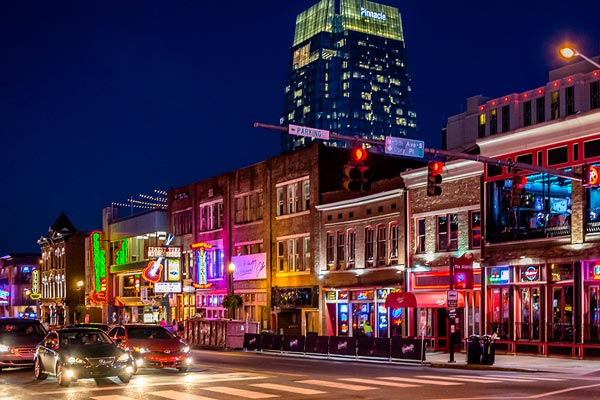EDGEHILL NEIGHBORHOOD: LIVING IN THE HEART OF NASHVILLE

About Edgehill
Edgehill began with the estate of Robert Currey, postmaster and mayor of Nashville in the 19th century, who owned a mansion in the area of Rose Park. Other settlers began to move into the same area and it was named Currey Hill.
The settlement grew into a neighborhood due to the Civil War. Two forts were constructed in the area by Union forces as a camp for fugitive slaves from the south. Many of the slaves stayed after the war to form a predominately black community that came to be named "Edgehill".
West Edgehill consists of single family detached homes. It was home to professionals who found it appealing due to a new streetcar line they could use to commute downtown.
Originally founded as a white community, demographics changed substantially in the early 1900s. The popularity of the automobile caused white flight to the suburbs. African Americans from Belle Meade and the Black Migration from the south quickly filled the void.
Black professionals moved in and continued developing the area. With professionals living in the west end and locally-owned businesses on the other, Edgehill became a self-sufficient African American community.
The citizens of Edgehill used their success to give back to the African American community.
Three prominent African American residents of Edgehill were William Edmonson, who became the first African American to have his own show at the Museum of Modern Art in New York City, MG Blakemore, a member of the Tennessee House of Representatives during the Civil Rights Movement, and Bill Barnes, a Methodist pastor, who was a great advocate during the Civil Rights Movement.
White Way Laundry was a very important part of the community. The cleaning service was founded in 1931 by W.H. Elam and his sons, Nelson and Ira.
During World War II, the government called upon White Way to stay open 24/7 for the next several years. During the day business would continue as usual, but after hours they washed bed linens and uniforms for the troops overseas.
Edgehill became the place to stay for traveling African Americans. Famous musicians who were welcomed by the city to play concerts were unable to stay in the segregated hotels downtown, so rooming houses in Edgehill welcomed tourists and artists.
Edgehill is now the official home of famous Music Row and is within minutes of big-name convenience shopping and downtown Nashville.
Architecturally, this neighborhood offers early century bungalows and new craftsman styles.
Buying & Selling in Edgehill
The median sales price* for homes in Edgehill is $640,000. Average price per square foot is $489, an increase of 58% compared to the same period last year.
* Stated values were current as of December, 2017
More Information on Living in Edgehill
- Learn more about Edgehill, its history, and neighborhood character on the Edgehill Neighorhood Coalition website.
- You can also check out photos from community events on the Edgehill Village Neighborhood Association Facebook page.
Neighborhood Map
Things To Do In & Around Edgehill
Downtown Nashville - Located in Downtown Nashville, Edgehill is the official home of famous Music Row. Where recording studios from the 50s through 70s set up shop establishing Nashville as music's mecca, it is the defacto hub of Music City.
Country Music Hall of Fame, great restaurants - everything is within walking distance. Nashville is easy going and laid back and filled with music that you can hear as you walk around the city.
Grand Ole Opry - The Grand Ole Opry is a mecca for Country and Bluegrass performers. Its stage has been used by artists ranging from Loretta Lynn, Roy Acuff, and Patsy Cline, to Carrie Underwood and Pam Tillis.
The Hermitage, Home of President Andrew Jackson - The Hermitage was the home of President Andrew Jackson. The home and adjoining farm are run by the Ladies Hermitage Association and are 1,050 acres in total. The house contains a majority of Jackson's personal artifacts and furniture.
To See in Edgehill








Internet and Cell Service in Edgehill
Internet Service
DSL (AT&T)
Cable (Xfinity, MegaPath, TW Telecom of Tennessee)
Cellular Service
AT&T, Sprint, T-Mobile, Verizon
Note: Always verify service to a property address when evaluating availability.
Edgehill Demographics
The current population of Edgehill is 5,095.
The median age is 33.
African/American = 70%, White = 25%, Asian = 3%, two or more races = 1%, Hispanic = 1%.
Schools in Edgehill
Elementary Schools
Carter Lawrence Elementary Magnet - PK–4
Eakin Elementary School - L-4
Middle Schools
John T. Moore Middle School - 5–8
West End Middle School - 5–8
High Schools
Hillsboro High School - 9–12
Economy
The unemployment rate in is 3.80%.
Current job growth is 2.46%.
Future job growth (next ten years) is predicted to be 41.12%.
The median household income is $46,758.
Voting
58.45% of the people in Nashville are registered Democrats.
39.87% are registered Republican
1.69% are independent.
Weather
Edgehill gets 50 inches of rain per year, while the US average is 39.
The average snowfall is 4 inches.
On average Edgehill has 205 sunny days per year.
Highest temperatures are in July and average 89 degrees.
Low temperatures occur in January and average 26 degrees.
Check out these other popular links
Additional Resources if You're Moving to Tennessee
Searching for a house can be both exciting and stressful. Here are online resources to help you plan your move.
- The Nashville Chamber of Commerce "Getting Established" page is a great resource for information on a variety of topics and is a great place to start.
- Department of Motor Vehicles instructions to re-register your out of state driver's license and vehicle.
- Check out the neighborhood! Read up on Nashville's eclectic neighborhoods and find your ideal vibe.
- Have kids? Learn about schools and their ratings before you move.












